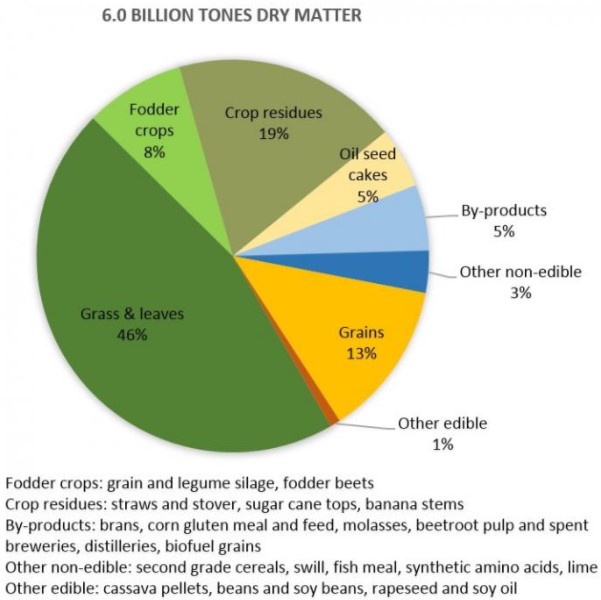Humans face mounting challenges when it comes to finding ways to sustainably feed an exploding population. As populations become wealthier and more urbanized, the demand for animal products continues to climb. Although supply chain efficiencies improve, livestock are considered a resource drain, requiring a large amount of feed, which could also be used by humans, to produce a relatively small amount of meat. A new study in Global Food Security found that livestock place less burden on the human food supply than previously reported. Even stronger, certain production systems contribute directly to global food security because they produce more highly valuable nutrients for humans, such as proteins, than they consume.
"As a Livestock Policy Officer working for the Food and Agriculture Organization (FAO) of the United Nations, I have been asked many times by the press to report on the negative environmental impacts of livestock," explained lead investigator Anne Mottet, PhD. "Doing so, I came to realize that people are continually exposed to incorrect information that is repeated without being challenged, in particular about livestock feed. There is currently no official and complete international database on what livestock eat. This study contributes to filling this gap and to provide peer-reviewed evidence to better inform policy makers and the public."

While there have been vast improvements in food systems, people still go hungry. In 2015 alone, approximately 800 million people around the world were undernourished. Animal food sources make a vital contribution to global nutrition and are an excellent source of macro- and micronutrients. Meat makes up 18% of global calories and 25% of global protein consumption and provides essential micro-nutrients, such as vitamin B12, iron, and calcium. Livestock use large areas of pastures where nothing else could be produced. Animals also add to agricultural production through manure production and drought power. Further, tending livestock provides a secure source of income for people in many in rural areas.
Despite these benefits, raising livestock is often pointed to as an inefficient system because animals consume food that could potentially be eaten by people. Some previous studies, often cited, put the consumption of grain needed to raise 1 kg of beef between 6 kg and 20 kg. Contrary to these high estimates, the current investigation found that an average of only 3 kg of cereals are needed to produce 1 kg of meat. It also shows important differences between production systems and species. For example, because they rely on grazing and forages, cattle need only 0.6 kg of protein from human food to produce 1 kg of protein in milk and meat, which is of higher nutritional quality. In addition, this study determined that 86% of livestock feed, which includes residues and by-products, is not suitable for human consumption. If not consumed by livestock, the study points out, these "leftovers" could quickly become an environmental burden as the human population grows and consumes more and more processed food. Researchers also analyzed land use and herd management.
Click here to see more...